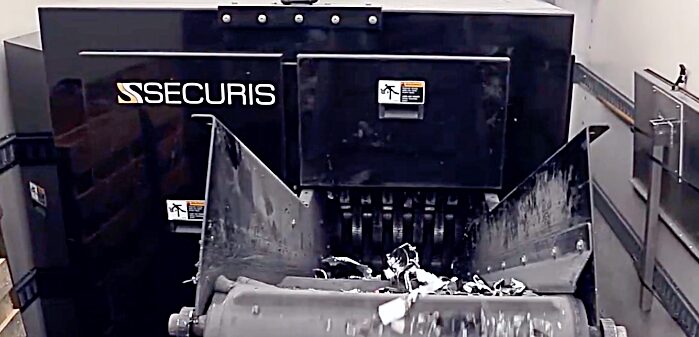The Sarbanes-Oxley Act of 2002 (SOX), primarily known for its stringent financial reporting and corporate governance regulations, also has significant implications for corporate data management practices. One of the often overlooked aspects of SOX is its relevance to data destruction, a crucial component in maintaining compliance with data integrity and security standards. Here, we highlight some best practices for SOX compliance, especially regarding end-of-life electronics, ensuring companies protect and dispose of sensitive information appropriately.
Understanding the Sarbanes-Oxley Act
 SOX was enacted in response to major corporate scandals like Enron and WorldCom to increase transparency in financial reporting and hold companies accountable for their financial practices. Key provisions include:
SOX was enacted in response to major corporate scandals like Enron and WorldCom to increase transparency in financial reporting and hold companies accountable for their financial practices. Key provisions include:
- Enhanced financial disclosures
- Increased corporate responsibility
- Stricter penalties for fraudulent financial activity
- Enhanced internal controls and audit requirements
Data Destruction and SOX Compliance
While SOX does not explicitly mandate data destruction, its requirements for record retention and internal controls imply a structured approach to handling and disposing of data, especially financial records. Here’s how SOX influences data destruction:
1. Record Retention Requirements

SOX Section 802 sets stringent guidelines on the retention of financial records.
Companies are required to maintain accurate and detailed records for a specified period. These guidelines require a clear policy for the retention and eventual destruction of records once they are no longer needed. The destruction of records must be managed carefully to ensure compliance with these retention schedules.
2. Internal Controls and Procedures
SOX Sections 302 and 404 require companies to establish robust internal controls to ensure the integrity of financial reporting. This includes controls over how data is archived and destroyed. Adequate internal controls should address the following:
- Identification of data that needs to be retained
- Secure storage methods
- Proper authorization for data destruction
- Documentation of the destruction process
Failure to properly manage data destruction could result in loss of critical records, leading to non-compliance and potential penalties.
3. Preventing Fraud and Data Tampering
The prevention of fraud and data tampering is a core objective of SOX. Inadequate data destruction practices can leave sensitive financial data vulnerable to unauthorized access or tampering. By implementing secure data destruction policies, companies can protect against data breaches and ensure that obsolete records are permanently destroyed, thereby upholding the integrity of their financial reporting. Partnering with an experienced data destruction partner can increase this protection level and add another layer of protection to your process. Securis recently completed an on-site shredding job for a financial services company. They told us that all hard drives had been removed and that we could recycle the eight server cabinets. We found 86 drives (72 SSDs and 14 Hard Drives) upon inspection. We shredded the 86 drives, saving the company from what could have been an expensive breach. The missed 86 drives represented 15% of the total destroyed drives.
Best Practices for Data Destruction Under SOX
To align data destruction practices with SOX requirements, companies should consider the following best practices:
1. Develop a Comprehensive Data Retention and Destruction Policy
Create a clear policy that outlines the following:
- Retention periods for different types of records
- Procedures for secure destruction of paper and electronic records
- Roles and responsibilities for managing the process
2. Implement Secure Destruction Methods
Ensure that data is destroyed using methods that make it unrecoverable. This includes:
- Shredding for physical documents
- Degaussing or overwriting for magnetic media
- Wiping, Shredding, or Disintegration of electronic data
3. Audit and Monitor Compliance
Regularly audit data destruction processes to ensure compliance with SOX and internal policies. Monitoring should include:
- Verification of destruction methods
- Documentation of destruction activities, including a certificate of destruction
- Regular reviews of policies and procedures
4. Employee Training and Awareness
Educate employees on the importance of data destruction and their role in ensuring compliance. Training programs should cover:
- Legal Requirements for data storage and disposal
- Company policies and procedures for data storage and disposal

Conclusion
The Sarbanes-Oxley Act’s impact on data destruction is a critical but often underappreciated aspect of compliance. Companies can comply with SOX requirements and enhance their overall data security posture by understanding and implementing effective data destruction practices. Ensuring that obsolete data is properly destroyed protects against potential fraud, data breaches, and non-compliance penalties, ultimately contributing to a company’s integrity and trustworthiness. Partnering with a secure and certified data destruction and IT recycling partner like Securis can ensure your compliance with SOX and many other compliance standards.
If you’re ready to responsibly dispose of your company’s IT assets, contact Securis today. We’re here to help you protect your data, the environment, and your bottom line.



